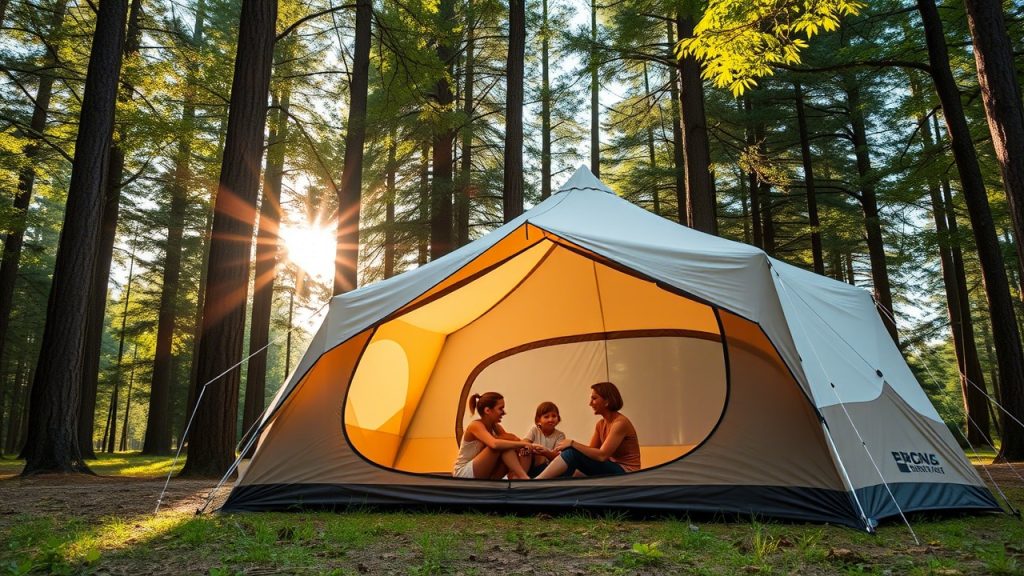A quick weekend camping trip is the perfect way to escape the daily grind and reconnect with nature, but a complicated or bulky tent can derail your plans. The ideal tent for a short getaway sets up in minutes, packs easily, and provides comfort for a night or two under the stars. We’ve selected the 9 best tent ideas for quick weekend escapes, emphasizing fast setup, portability, and livability for 3-season camping in 2025.
Drawing from expert reviews by Outdoor Gear Lab, Switchback Travel, and REI, plus user feedback, these tents suit solo adventurers, couples, and small families. We’ve included a buying guide, practical tips, 12 frequently asked questions, and a conclusion to help you choose the perfect tent and make your weekend escape unforgettable.
Why the Right Tent Matters for Weekend Escapes
Weekend trips are about squeezing maximum relaxation into minimal time. Whether you’re car camping at a state park, pitching by a lake, or hiking to a backcountry site, your tent should enhance the experience, not hinder it. Key benefits of a great weekend tent include:
- Speedy Setup: Intuitive designs or pop-up mechanisms let you pitch in under 10 minutes, freeing time for hiking, fishing, or stargazing.
- Portability: Lightweight (2–10 lbs.) and compact tents fit backpacks or car trunks, ideal for spontaneous getaways.
- Comfortable Design: Spacious interiors, vestibules, and ventilation ensure a cozy, breathable space for restful sleep.
- Weather Readiness: Waterproof rainflies and sturdy poles handle unexpected spring showers or fall breezes.
Our picks focus on 3-season tents with setup times under 10 minutes, weights suitable for car camping or short hikes, and features like dual doors, ample mesh, and durable fabrics. From ultralight backpacking models to family-friendly shelters, these tents make your weekend escape seamless and enjoyable.
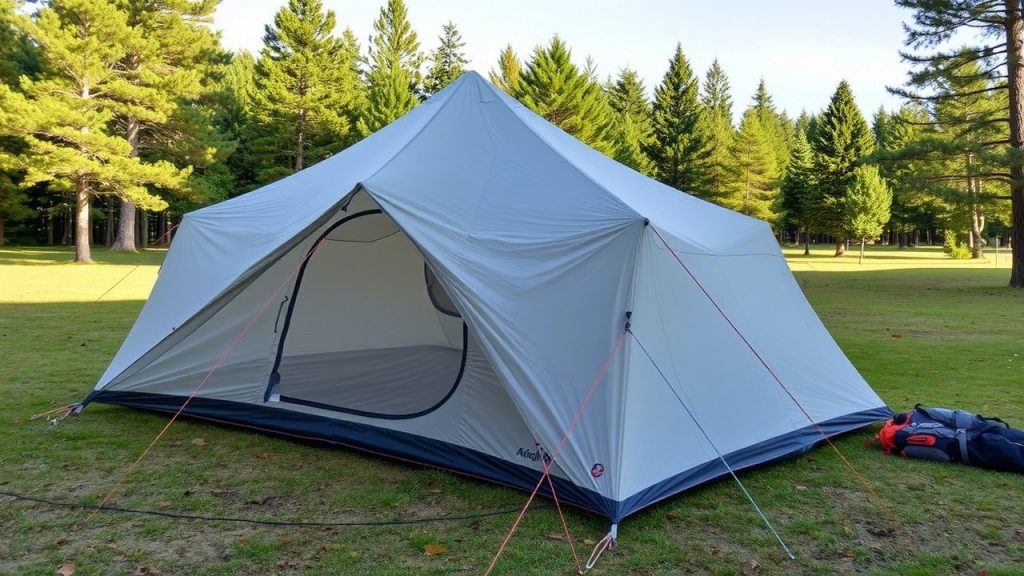
How to Choose a Tent for Quick Weekend Escapes
To find the perfect tent, consider these factors:
- Camping Style: Ultralight tents (2–4 lbs.) like the Big Agnes Copper Spur suit backpackers; heavier tents (5–10 lbs.) like the Coleman Sundome are great for car camping.
- Group Size: Solo campers need 20–30 sq. ft.; couples require 30–40 sq. ft.; families need 50+ sq. ft. for gear and elbow room.
- Setup Ease: Freestanding tents with color-coded poles (e.g., REI Half Dome) or pop-up designs (e.g., Quechua 2 Seconds) pitch fastest.
- Weather Needs: A full rainfly with 1200mm+ waterproofing and guylines (e.g., Kelty Late Start) handles rain or wind.
- Ventilation: Mesh panels (50%+ canopy) and vents (e.g., Nemo Aurora) prevent stuffiness in warm weather.
- Packability: Packed sizes under 20 inches fit backpacks or car trunks for easy transport.
- Durability: Fabrics of 20D–75D (e.g., Marmot Tungsten’s 40D) balance weight and longevity for occasional or frequent trips.
Test your tent in your backyard to master setup, check space, and ensure it meets your comfort and portability needs before hitting the trail.
Top 9 Tent Ideas for Quick Weekend Escapes
1. Big Agnes Copper Spur HV UL2
- Best for: Ultralight backpacking escapes
- Capacity: 2-person
- Key Features: 2 lb 11 oz, 29 sq. ft. floor, 80% mesh canopy, 20D ripstop nylon, 40-inch peak height, 3-minute setup
- Why We Love It: The Copper Spur HV UL2 is a featherweight gem for quick backcountry trips. Its 80% mesh canopy maximizes airflow for warm spring nights, while the 20D nylon rainfly (1200mm) with dual vents handles light rain, tested on California’s Lost Coast Trail. Pre-bent DAC Featherlite poles and color-coded clips enable a 3-minute setup, even in fading light. The 29 sq. ft. floor suits couples, with two 9 sq. ft. vestibules and eight internal pockets for gear. Testers praise its portability for weekend hikes in the Sierras, though the 15D floor benefits from a footprint on rocky terrain. Ideal for hikers seeking luxury without weight.
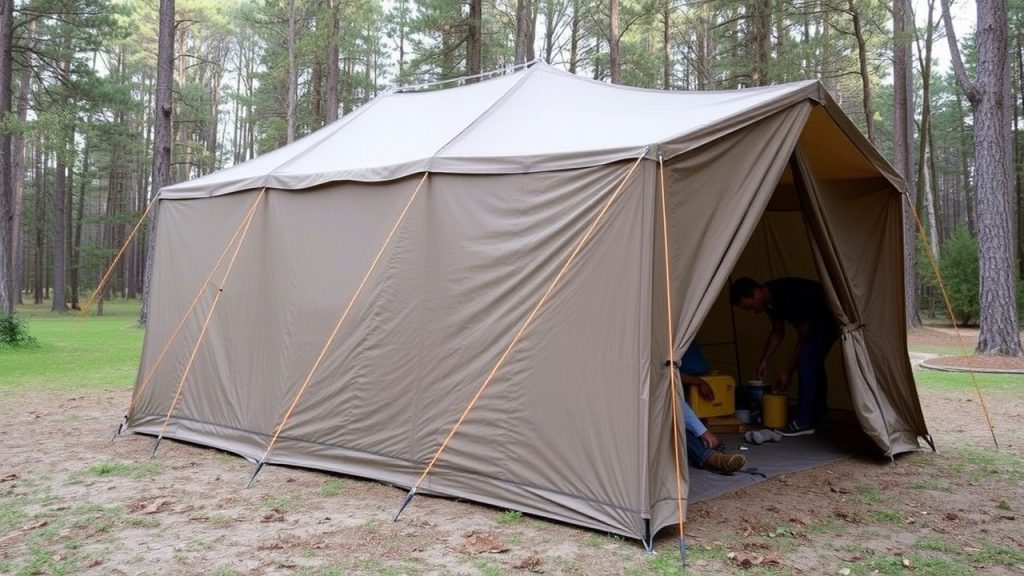
2. REI Co-op Half Dome SL 2+
- Best for: Budget-friendly car camping or short hikes
- Capacity: 2-person
- Key Features: 4 lb 13 oz, 33.8 sq. ft. floor, 70% mesh walls, 40D ripstop nylon, 44-inch peak height, 5-minute setup
- Why We Love It: The Half Dome SL 2+ delivers value and comfort, with a 70% mesh canopy for breathability and a 40D nylon rainfly (1500mm) for rain protection, tested in Oregon’s damp forests. Its 33.8 sq. ft. floor and 44-inch peak height feel spacious, and two 11.25 sq. ft. vestibules keep gear dry. Setup takes 5 minutes with color-coded poles, perfect for beginners. Users love its livability for car camping in Midwest state parks, though its weight is better for short hauls than long treks.
3. Nemo Aurora 3P
- Best for: Small group car camping
- Capacity: 3-person
- Key Features: 6 lb 4 oz, 44.1 sq. ft. floor, 65% mesh walls, 68D polyester, 44-inch peak height, 6-minute setup
- Why We Love It: The Aurora 3P offers a roomy retreat, with 65% mesh walls for ventilation and a 68D polyester rainfly (1200mm) for weather resistance, tested in Colorado’s Front Range. Its 44.1 sq. ft. floor fits two adults with gear or three snugly, and two 9.8 sq. ft. vestibules store packs. Setup takes 6 minutes with hubbed poles, manageable solo. Testers praise its space for weekend lake trips, but its weight suits car camping or short walks to campsites.
4. Kelty Late Start 2
- Best for: Budget solo or couple camping
- Capacity: 2-person
- Key Features: 4 lb 8 oz, 29.5 sq. ft. floor, 60% mesh canopy, 68D polyester, 40-inch peak height, 4-minute setup
- Why We Love It: The Late Start 2 is an affordable, user-friendly option, with a 60% mesh canopy for airflow and a 68D polyester rainfly (1800mm) with adjustable vents, tested in Nevada’s mild fall weather. Its Quick-Corner pole system allows a 4-minute setup, ideal for late arrivals at coastal campgrounds. The 29.5 sq. ft. floor and 10 sq. ft. vestibule suit solo campers or cozy couples, and light gray fabric reduces heat. Users love its simplicity for quick getaways, though it’s snug for two with bulky gear.
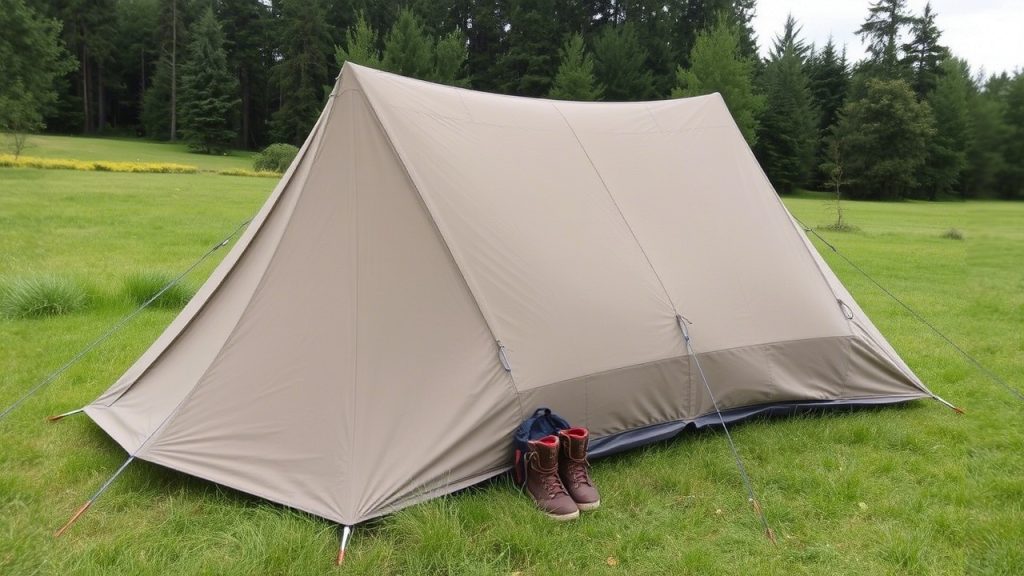
5. MSR Hubba Hubba LT 2
- Best for: All-around backpacking performance
- Capacity: 2-person
- Key Features: 2 lb 14 oz, 30 sq. ft. floor, 70% mesh body, 20D ripstop nylon, 40-inch peak height, 4-minute setup
- Why We Love It: The Hubba Hubba LT 2 is a lightweight, versatile tent with a 70% mesh body for ventilation and a 20D nylon rainfly (1200mm) for rain protection, tested in Utah’s desert canyons. Easton Syclone poles and a hubbed design enable a 4-minute setup, perfect for quick pitches in fading light. The 30 sq. ft. floor and two 8.7 sq. ft. vestibules suit couples, with a gear loft for organization. Testers praise its balance of weight and comfort for weekend hikes in the Rockies, though humid conditions require careful venting to avoid condensation.
6. Quechua 2 Seconds Easy Tent
- Best for: Instant car camping setups
- Capacity: 2-person
- Key Features: 7 lb 1 oz, 30 sq. ft. floor, 50% mesh walls, 190T polyester, 43-inch peak height, 30-second setup
- Why We Love It: The Quechua 2 Seconds is a game-changer for instant camping, popping up in 30 seconds, as tested at California music festivals. Its 50% mesh walls provide airflow, and the 190T polyester rainfly (2000mm) handles light showers. The 30 sq. ft. floor fits two, with a 5 sq. ft. vestibule for gear. Ascending guylines add stability in breezy conditions. Users love its speed for spontaneous lake trips, though repacking requires practice to master the fold-down technique.
7. Marmot Tungsten 2P
- Best for: Durable weekend backpacking
- Capacity: 2-person
- Key Features: 4 lb 10 oz, 32 sq. ft. floor, 65% mesh canopy, 40D ripstop nylon, 43-inch peak height, 5-minute setup
- Why We Love It: The Tungsten 2P is a robust choice, with a 65% mesh canopy for ventilation and a 40D nylon rainfly (1800mm) with vents for weather protection, tested in Arizona’s high desert. Its 32 sq. ft. floor and two 9.3 sq. ft. vestibules offer ample space, and pre-bent poles create a 43-inch peak height for sitting up comfortably. Setup takes 5 minutes with color-coded clips. Users praise its durability for weekend trips in the Adirondacks, though the rainfly needs careful tensioning to prevent sagging in heavy rain.
8. Coleman Sundome 4
- Best for: Budget family car camping
- Capacity: 4-person
- Key Features: 9 lb 8 oz, 63 sq. ft. floor, 50% mesh walls, 75D polyester, 59-inch peak height, 8-minute setup
- Why We Love It: The Sundome 4 is a spacious, affordable option for families, with 50% mesh walls for airflow and a 75D polyester rainfly (1000mm) for light rain, tested in Texas state parks. Its 63 sq. ft. floor fits a family or four adults, and a 9 sq. ft. vestibule stores gear. Setup takes 8 minutes with fiberglass poles, manageable with two people. Users love its roominess for weekend campgrounds, though it’s less suited for heavy storms due to the lower waterproof rating.
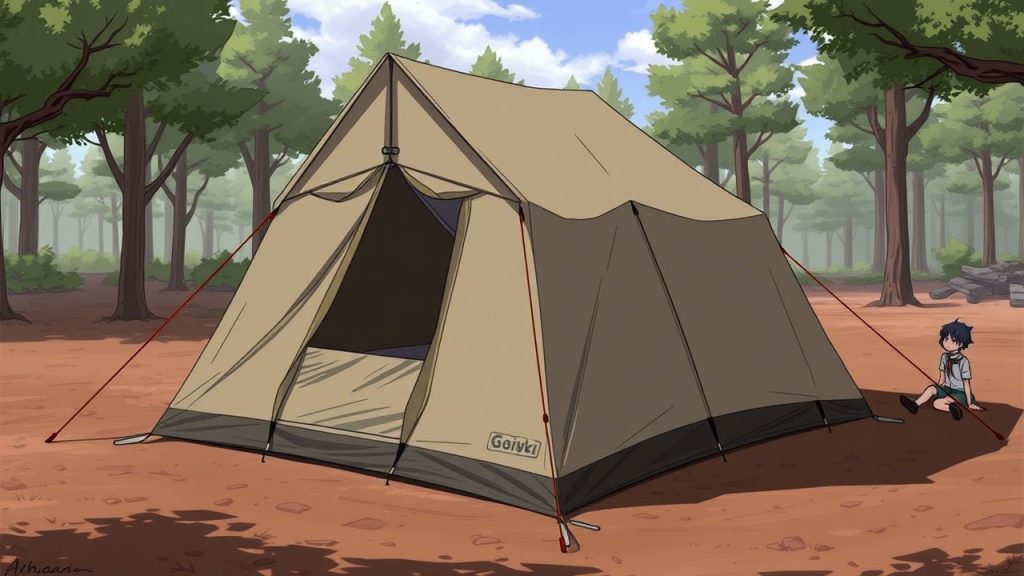
9. Moon Lence Instant Pop-Up Tent
- Best for: Solo or couple instant camping
- Capacity: 2-person
- Key Features: 5 lb 8 oz, 27 sq. ft. floor, 60% mesh walls, 190T polyester, 43-inch peak height, 1-minute setup
- Why We Love It: The Moon Lence Pop-Up Tent is perfect for hassle-free escapes, unfolding in 1 minute, as tested at beachside campsites in Florida. Its 60% mesh walls ensure ventilation for warm nights, and the 190T polyester rainfly (2000mm) handles drizzle. The 27 sq. ft. floor suits one camper with gear or two snugly, with a 5 sq. ft. vestibule for essentials. Users love its simplicity for festivals or short trips, but its lighter materials are less durable for frequent or rugged use.
Key Features for a Weekend Escape Tent
To ensure your tent enhances your quick getaway, prioritize these features:
- Rapid Setup: Freestanding designs or pop-up mechanisms (e.g., Quechua 2 Seconds’ 30 seconds) pitch in under 10 minutes.
- Portability: Weights of 2–10 lbs. (e.g., MSR Hubba Hubba’s 2 lb 14 oz) and packed sizes under 20 inches for easy transport.
- Breathability: 50%+ mesh canopies and vents (e.g., Big Agnes Copper Spur’s 80%) for warm, humid nights.
- Weather Protection: Full rainflies with 1200mm+ waterproofing (e.g., Moon Lence’s 2000mm) and guylines for rain or wind.
- Comfortable Interior: 30+ sq. ft. for couples, 50+ sq. ft. for families (e.g., Coleman Sundome’s 63 sq. ft.), with 40+ inch peak heights.
- Gear Storage: Vestibules of 5–10 sq. ft. per side (e.g., REI Half Dome’s 11.25 sq. ft.) for packs and shoes.
- Durable Materials: 20D–75D nylon or polyester (e.g., Nemo Aurora’s 68D) for a balance of weight and longevity.
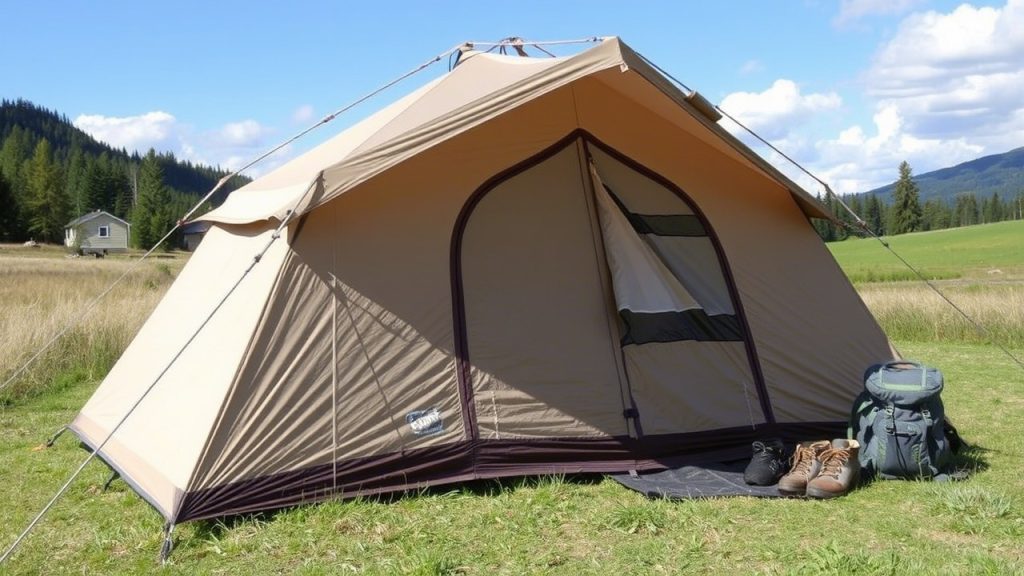
Tips for Quick Weekend Camping
- Pre-Pack Your Tent: Keep it in its stuff sack, ready to grab for last-minute trips.
- Scout a Flat Site: Choose a spot free of rocks or roots for quick setup, ideally with shade for warm days.
- Practice Setup: Pitch your tent at home, especially pop-up models like the Moon Lence, to avoid fumbling in the dark.
- Upgrade Stakes: Use MSR Groundhogs or titanium stakes for better grip in loose or windy conditions.
- Pack Light Gear: Bring a 40°F-rated sleeping bag, compact stove, and minimal clothing to save space.
- Check Weather Forecasts: Ensure your tent’s rainfly (e.g., Kelty Late Start’s 1800mm) can handle expected showers.
- Maximize Ventilation: Open mesh doors and vents at night for airflow, closing them if rain threatens.
- Protect the Floor: Use a footprint, tarp, or Tyvek sheet for thin floors (e.g., Big Agnes Copper Spur’s 15D) on rough ground.
- Organize Efficiently: Store gear in vestibules or dry bags to keep the interior spacious and dry.
- Bring a Headlamp: A lightweight headlamp (e.g., Black Diamond Spot) simplifies nighttime setup and tasks.
- Simplify Meals: Pack pre-made meals or a simple stove kit (e.g., Jetboil Flash) to save time for relaxation.
- Follow Leave No Trace: Pack out trash and minimize impact to preserve campsites for future trips.
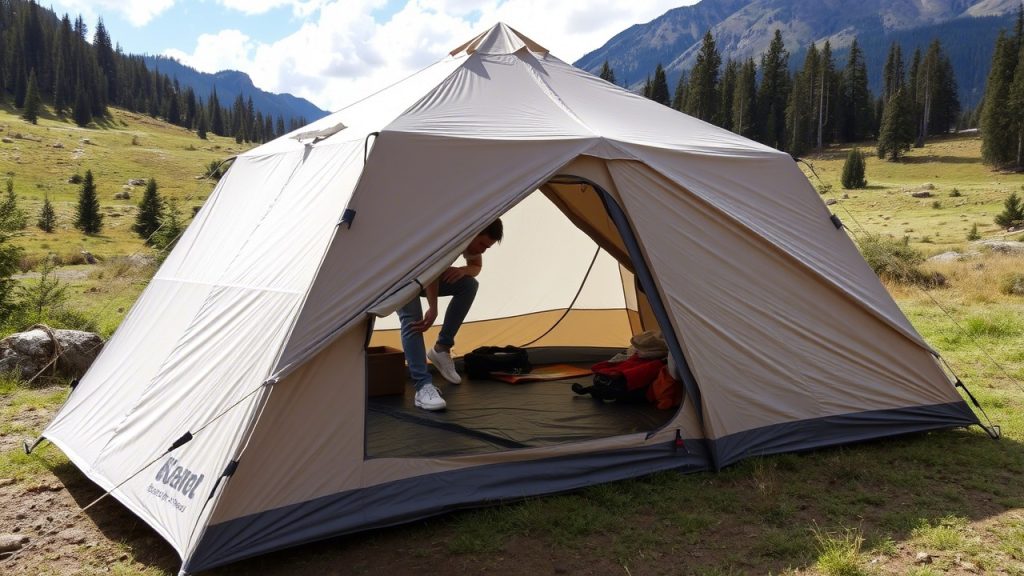
Caring for Your Weekend Tent
To keep your tent ready for countless getaways:
- Dry Completely: Hang or pitch to dry after trips to prevent mold, especially in humid conditions.
- Clean Gently: Use a sponge and Nikwax Tech Wash to remove dirt; avoid machine washing, which damages coatings.
- Store Loosely: Keep in a breathable bag in a cool, dry place to avoid fabric stress or mildew.
- Repair Promptly: Patch tears with Gear Aid Tenacious Tape and replace damaged poles or zippers to maintain functionality.
- Refresh Waterproofing: Apply Nikwax Tent & Gear SolarProof every 1–2 years to ensure rainfly performance.
12 Frequently Asked Questions About Tents for Weekend Escapes
1. What makes a tent ideal for quick weekend escapes?
A weekend tent should pitch in under 10 minutes (e.g., Quechua 2 Seconds’ 30 seconds), weigh 2–10 lbs. (e.g., Big Agnes Copper Spur’s 2 lb 11 oz), and provide 30+ sq. ft. for comfort. Mesh walls, full rainflies (1200mm+), and vestibules ensure ventilation and weather protection, as seen in the MSR Hubba Hubba LT 2.
2. Are pop-up tents reliable for weekend camping?
Pop-up tents like the Moon Lence (1-minute setup) are reliable for mild weather and car camping, offering instant pitching for festivals or beach trips. They’re less durable than traditional tents (e.g., Marmot Tungsten) and may struggle in winds above 20 mph, so check forecasts.
3. Should I choose a freestanding or non-freestanding tent for a weekend trip?
Freestanding tents (e.g., REI Half Dome) pitch easily on any surface, ideal for rocky or sandy sites like Joshua Tree or beach campgrounds. Non-freestanding tents save weight but require staking and trekking poles, making them less practical for quick, casual escapes unless you’re experienced.
4. How important is ventilation in a weekend tent?
Ventilation prevents stuffiness and condensation on warm spring or fall nights. Tents with 50%+ mesh and adjustable vents (e.g., Nemo Aurora’s 65% mesh) ensure airflow, especially in humid regions like the Southeast or during muggy lake trips.
5. What’s the best tent size for a weekend escape?
Solo campers need 20–30 sq. ft. For solo campers, a tent with around 29.5 sq. ft. of space—such as the Kelty Late Start—is typically sufficient. Couples generally need 30–40 sq. ft.; the Marmot Tungsten, with 32 sq. ft., is a good example. Families, on the other hand, should look for tents offering 50+ sq. ft., like the Coleman Sundome’s 63 sq. ft. Upsizing by one person adds comfort for gear or lounging during short stays.
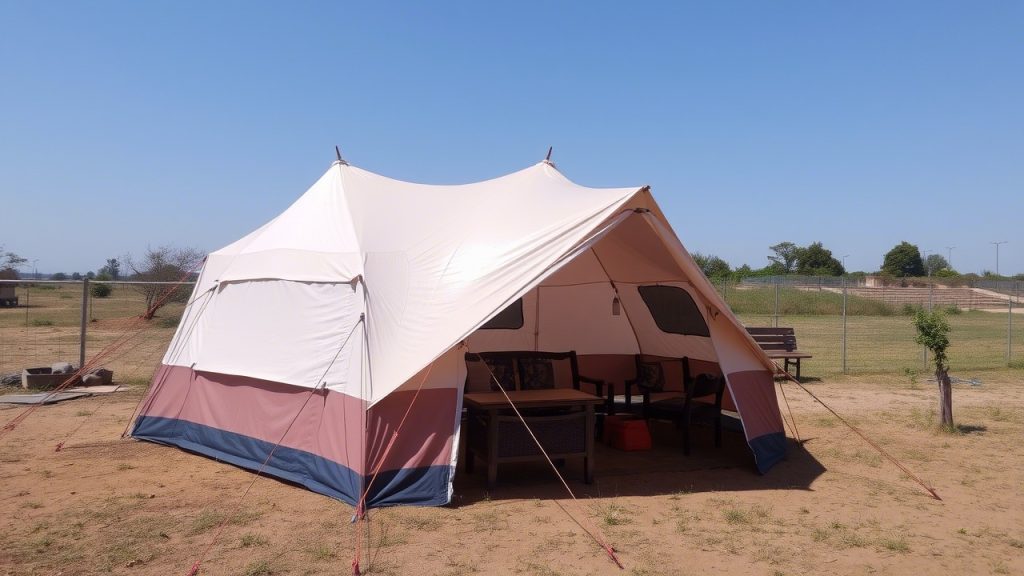
6. How do I ensure my tent is weather-ready for a weekend trip?
Choose a tent with a full rainfly (1200mm+ waterproofing, e.g., Quechua’s 2000mm), strong poles, and multiple guylines (e.g., MSR Hubba Hubba). Pitch with the narrow end into the wind, use sturdy stakes, and shake the frame to test stability, especially for fall breezes or spring showers.
7. Are budget tents suitable for weekend escapes?
Budget tents like the Kelty Late Start or Coleman Sundome offer reliable performance for mild conditions, with durable fabrics (68D–75D) and decent waterproofing (1000–1800mm). They’re heavier than premium tents (e.g., Big Agnes Copper Spur) but ideal for occasional car camping or short trips.
8. How do I manage condensation in a weekend tent?
Condensation builds in humid or warm conditions. Double-wall tents with mesh (e.g., Nemo Aurora) reduce it by separating the rainfly. Open vents during dry spells, store wet gear in vestibules, and use a microfiber towel to wipe walls, especially in muggy climates.
9. Can I use a backpacking tent for car camping on a weekend trip?
Yes, backpacking tents like the MSR Hubba Hubba LT 2 (2 lb 14 oz) work for car camping, offering lightweight portability and quick setup. They’re less spacious than family tents (e.g., Coleman Sundome), so ensure the floor size (30+ sq. ft.) meets your group’s needs.
10. How long should a weekend tent last?
With proper care drying thoroughly, cleaning gently, and storing loosely a quality tent lasts 5–15 years or 50–150 trips. Durable models like the Marmot Tungsten (40D nylon) withstand frequent use, while budget tents (e.g., Moon Lence’s 190T polyester) may need replacing sooner.
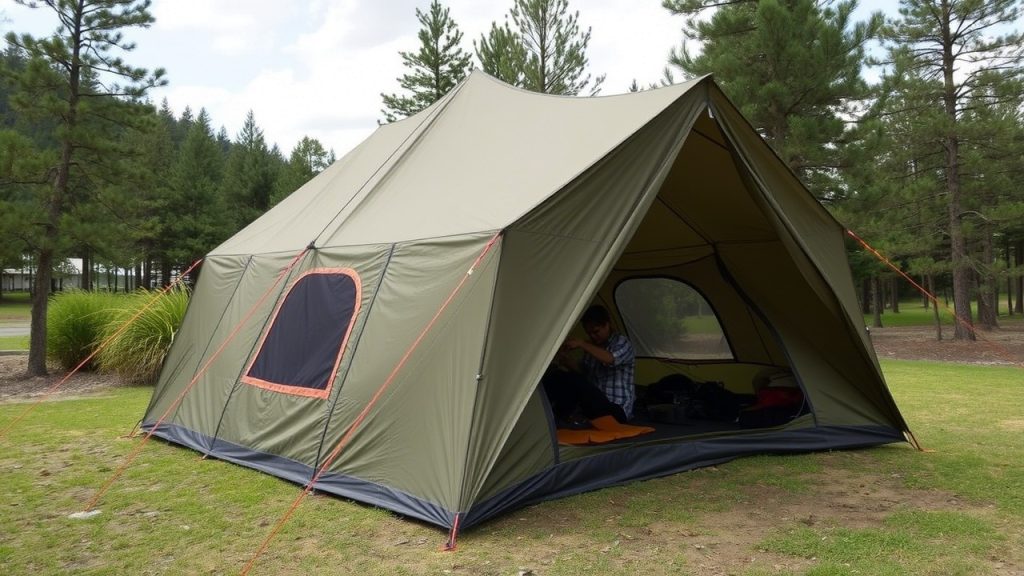
11. What’s the benefit of a tent with a large vestibule for a weekend trip?
Vestibules (5–10 sq. ft. per side, e.g., REI Half Dome’s 11.25 sq. ft.) store wet or dirty gear like boots and packs, keeping the interior dry and spacious. They’re ideal for quick trips where you want to stay organized without unpacking everything.
12. How do I pack a tent efficiently for a weekend escape?
Compress the tent into its stuff sack, splitting components (poles, rainfly, body) among group members for backpacking. For car camping, keep it near the top of your trunk for quick access. Store stakes in a separate bag to avoid puncturing fabrics, and ensure it’s dry to prevent mildew.
Conclusion
A quick weekend escape is your ticket to adventure, and the right tent ensures it’s filled with comfort and ease. From the ultralight Big Agnes Copper Spur HV UL2 for backcountry hikes to the spacious Coleman Sundome 4 for family campgrounds, our nine tent picks cater to every camper’s needs.
Focus on fast setup, portability, and livability, and use our tips to streamline your trip from pitching in minutes to packing light. With a reliable tent in tow, you’re ready to unplug, unwind, and make lasting memories in the great outdoors, returning refreshed for the week ahead.

